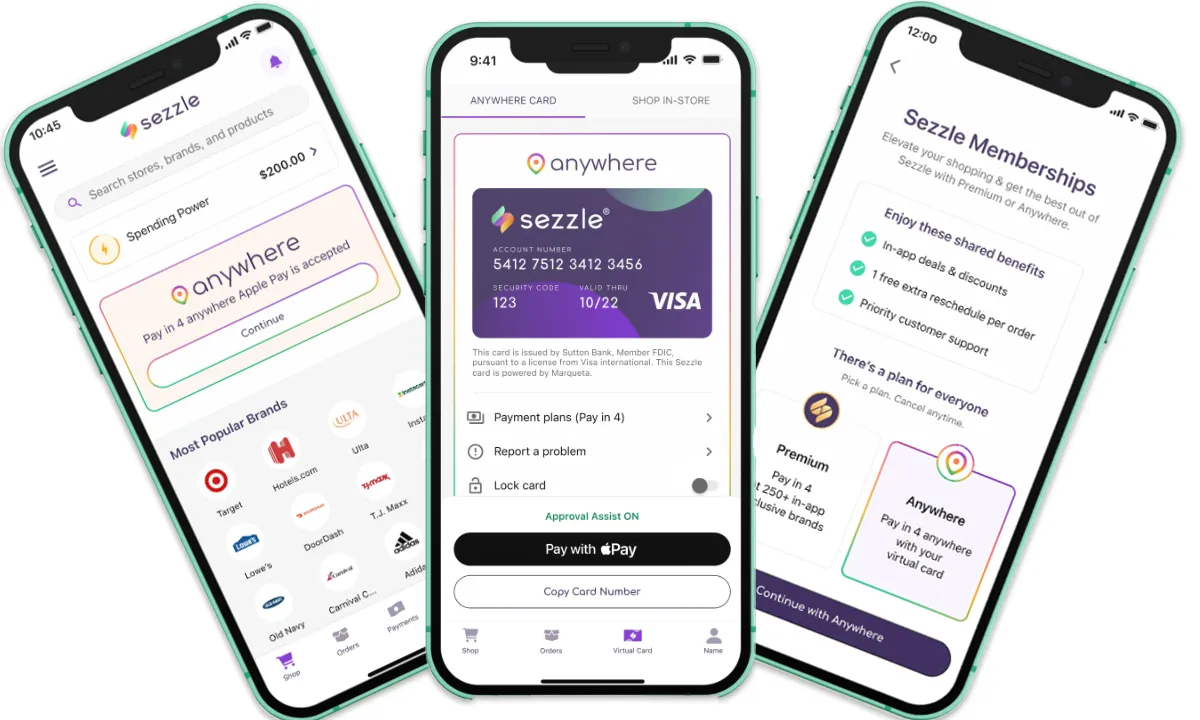Mega-cap tech stocks like Apple, Microsoft, and Amazon dominate markets with innovation in AI, cloud computing, and more, offering high-growth opportunities while influencing global financial trends and shaping future technologies.

It’s been less than 2 years since Facebook purchased CTRL-Labs, and they’re already releasing concepts of how neural wristbands will work.

Thanks to a new video and document provided by Facebook, we now have a look into the company’s progressing foray into the neural/gaming industry. Based on technology from CTRL-Labs, the neural-input startup acquired by the company in 2019, the video shows off EMG (electromyography) wristbands that translate neural signals from your brain, into virtual actions. These could range from simple tasks like tapping or swiping, to complex ones like typing or playing games. The very techy document goes into further depth, which you can check out here.
These bands also have haptic feedback, a technology designed to output vibrations and movements created to simulate touch or feeling. All of this was put out in a Facebook blog post by Facebook Reality Labs, which you can check out below:
The company says that at the bands’ simplest, they can track basic gestures which Facebook has dubbed “clicks.” These clicks are designed to be easily detectible, resulting in an easy to execute, reliable task. They’ve been compared by The Verge to “Microsoft HoloLens “air tap” gesture,” but in a neural sense.
Facebook says that pinching is one of the easiest gestures, since you can do while walking, talking, sitting, reading, etc. The accessibility and ease of use for this current prototype is still very good. Pinching can accomplish all sorts of tasks, and the company says that they’re moving into “richer controls,” likely ones that involve any range of movements or motions.
They say that it’ll let you be able to “actually touch and move virtual UIs,” something that they’re developing high quality haptic feedback for.
All of the information about Facebook’s new neural wristband and AR glasses was released as part of Tech@facebook’s 3 part series on HCI, or human-computer interaction. They laid out a 10 year vision for an AI-powered AR system, part of which included these neural wristbands.
It seems as though the company’s been preparing for this future since Oculus’ acquisition by Facebook back in 2014. The plan was accelerated following Facebook’s acquisition of CTRL-Labs in 2019, something that gave them a leading position in unique controlling devices.
That pushed towards Facebook’s conundrum, apparently as to where the device needed to go. They didn’t want something like Elon Musk’s Neuralink, which was a chip implant within the head, and surprisingly, they didn’t want something too privacy invading, like a voice powered system. This apparently pushed them towards wrist applications, specifically something “not akin to mind reading.”
The funny part for me, is the fact that CTRL-Labs was known to have been creating a neural wristband, at least since Facebook’s acquisition of the company. That means that the combined entity has had almost 2 years to improve upon CTRL’s existing software and hardware, something that they’ve apparently been hard at work doing.
What I really love, is that Reardon, FRL Director of Neuromotor Interfaces said that “The goal of neural interfaces is to upset this long history of human-computer interaction and start to make it so that humans now have more control over machines than they have over us; We want computing experiences where the human is the absolute center of the entire experience.”
Facebook’s really hard at work on this project. They’re usually not the first to something major like what neural input could be. That’s why many are confused. The company’s well known for sticking with what works, unless something puts them at risk, like with Instagram or WhatsApp. They’re not usually the ones to stumble first so that others can walk neatly behind them.
They’re also not the kind of company that focuses on “privacy, security, and safety as fundamental research questions.” The document that Facebook provided alongside the video even says that they’re asking others to peer-review their work, looking over to make sure that they stay within their limits. The company has even gone as far as to say that there needs to be “many discussions to have openly and transparently about what the future of HCI can and should look like.”
There’s just so much that this project can go towards, and it’s incredible that it’s Facebook leading the pack. Just imagine if Facebook can (safely and privately) connect the billions across the globe that can’t reach one another, with an AR system that uses neural inputs to make things happen. It’s sort of scary, but also really optimistic. We’ll check back on the story as it develops, so check back on Statural.com as the news rolls in.

Mega-cap tech stocks like Apple, Microsoft, and Amazon dominate markets with innovation in AI, cloud computing, and more, offering high-growth opportunities while influencing global financial trends and shaping future technologies.

CoreWeave posted exceptional Q1 2025 results with revenue reaching $981.6 million, up 420% year-over-year. The AI infrastructure provider secured key partnerships with OpenAI and IBM, while maintaining a 62% Adjusted EBITDA margin. The company’s revenue backlog grew to $25.9 billion, bolstered by OpenAI’s $11.2 billion strategic commitment.

E-commerce giant Shopify delivered exceptional Q1 2025 results with revenue up 27% to $2.36B and operating income doubling to $203M, while maintaining strong merchant growth and platform adoption.
It’s been less than 2 years since Facebook purchased CTRL-Labs, and they’re already releasing concepts of how neural wristbands will work.

Thanks to a new video and document provided by Facebook, we now have a look into the company’s progressing foray into the neural/gaming industry. Based on technology from CTRL-Labs, the neural-input startup acquired by the company in 2019, the video shows off EMG (electromyography) wristbands that translate neural signals from your brain, into virtual actions. These could range from simple tasks like tapping or swiping, to complex ones like typing or playing games. The very techy document goes into further depth, which you can check out here.
These bands also have haptic feedback, a technology designed to output vibrations and movements created to simulate touch or feeling. All of this was put out in a Facebook blog post by Facebook Reality Labs, which you can check out below:
The company says that at the bands’ simplest, they can track basic gestures which Facebook has dubbed “clicks.” These clicks are designed to be easily detectible, resulting in an easy to execute, reliable task. They’ve been compared by The Verge to “Microsoft HoloLens “air tap” gesture,” but in a neural sense.
Facebook says that pinching is one of the easiest gestures, since you can do while walking, talking, sitting, reading, etc. The accessibility and ease of use for this current prototype is still very good. Pinching can accomplish all sorts of tasks, and the company says that they’re moving into “richer controls,” likely ones that involve any range of movements or motions.
They say that it’ll let you be able to “actually touch and move virtual UIs,” something that they’re developing high quality haptic feedback for.
All of the information about Facebook’s new neural wristband and AR glasses was released as part of Tech@facebook’s 3 part series on HCI, or human-computer interaction. They laid out a 10 year vision for an AI-powered AR system, part of which included these neural wristbands.
It seems as though the company’s been preparing for this future since Oculus’ acquisition by Facebook back in 2014. The plan was accelerated following Facebook’s acquisition of CTRL-Labs in 2019, something that gave them a leading position in unique controlling devices.
That pushed towards Facebook’s conundrum, apparently as to where the device needed to go. They didn’t want something like Elon Musk’s Neuralink, which was a chip implant within the head, and surprisingly, they didn’t want something too privacy invading, like a voice powered system. This apparently pushed them towards wrist applications, specifically something “not akin to mind reading.”
The funny part for me, is the fact that CTRL-Labs was known to have been creating a neural wristband, at least since Facebook’s acquisition of the company. That means that the combined entity has had almost 2 years to improve upon CTRL’s existing software and hardware, something that they’ve apparently been hard at work doing.
What I really love, is that Reardon, FRL Director of Neuromotor Interfaces said that “The goal of neural interfaces is to upset this long history of human-computer interaction and start to make it so that humans now have more control over machines than they have over us; We want computing experiences where the human is the absolute center of the entire experience.”
Facebook’s really hard at work on this project. They’re usually not the first to something major like what neural input could be. That’s why many are confused. The company’s well known for sticking with what works, unless something puts them at risk, like with Instagram or WhatsApp. They’re not usually the ones to stumble first so that others can walk neatly behind them.
They’re also not the kind of company that focuses on “privacy, security, and safety as fundamental research questions.” The document that Facebook provided alongside the video even says that they’re asking others to peer-review their work, looking over to make sure that they stay within their limits. The company has even gone as far as to say that there needs to be “many discussions to have openly and transparently about what the future of HCI can and should look like.”
There’s just so much that this project can go towards, and it’s incredible that it’s Facebook leading the pack. Just imagine if Facebook can (safely and privately) connect the billions across the globe that can’t reach one another, with an AR system that uses neural inputs to make things happen. It’s sort of scary, but also really optimistic. We’ll check back on the story as it develops, so check back on Statural.com as the news rolls in.

Mega-cap tech stocks like Apple, Microsoft, and Amazon dominate markets with innovation in AI, cloud computing, and more, offering high-growth opportunities while influencing global financial trends and shaping future technologies.

CoreWeave posted exceptional Q1 2025 results with revenue reaching $981.6 million, up 420% year-over-year. The AI infrastructure provider secured key partnerships with OpenAI and IBM, while maintaining a 62% Adjusted EBITDA margin. The company’s revenue backlog grew to $25.9 billion, bolstered by OpenAI’s $11.2 billion strategic commitment.

E-commerce giant Shopify delivered exceptional Q1 2025 results with revenue up 27% to $2.36B and operating income doubling to $203M, while maintaining strong merchant growth and platform adoption.

Buy-now-pay-later leader Sezzle shattered Q1 expectations with revenue surging 123% to $104.9M, as net income quadrupled to $36.2M. The fintech company raised 2025 guidance on strong performance across all metrics.